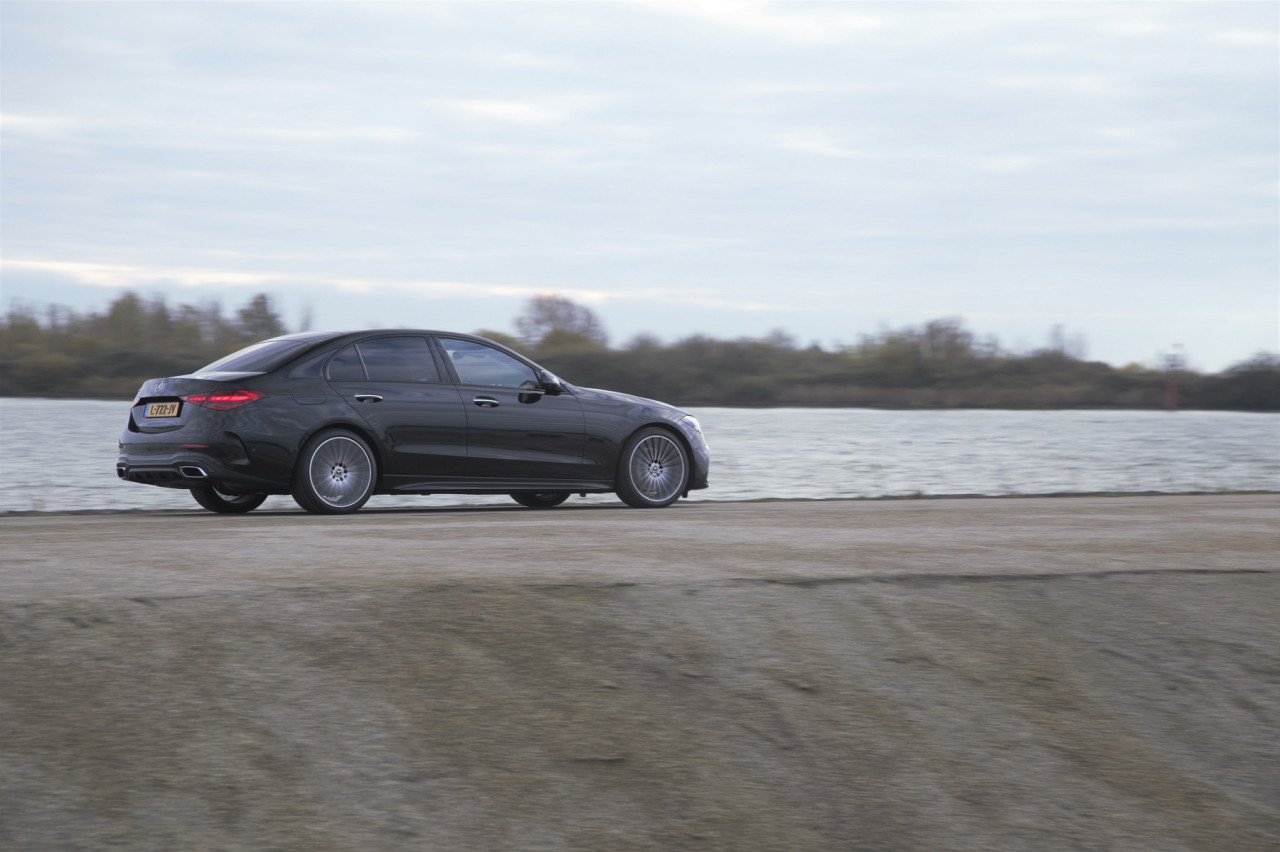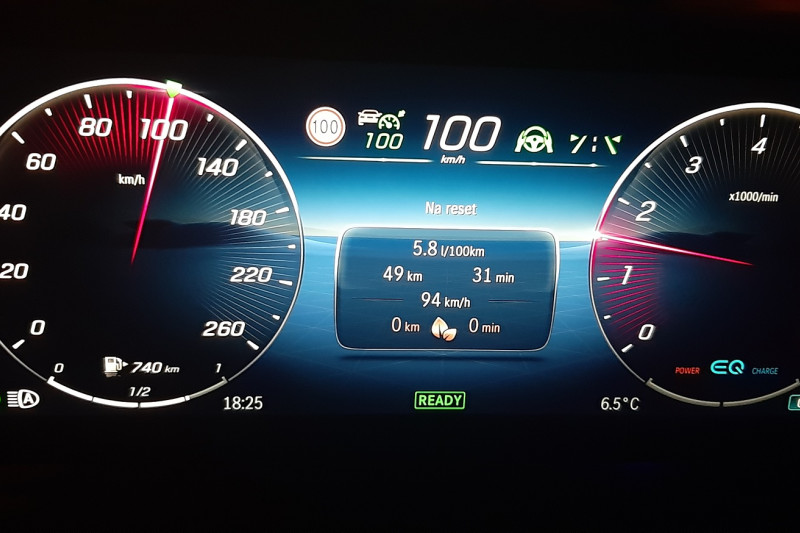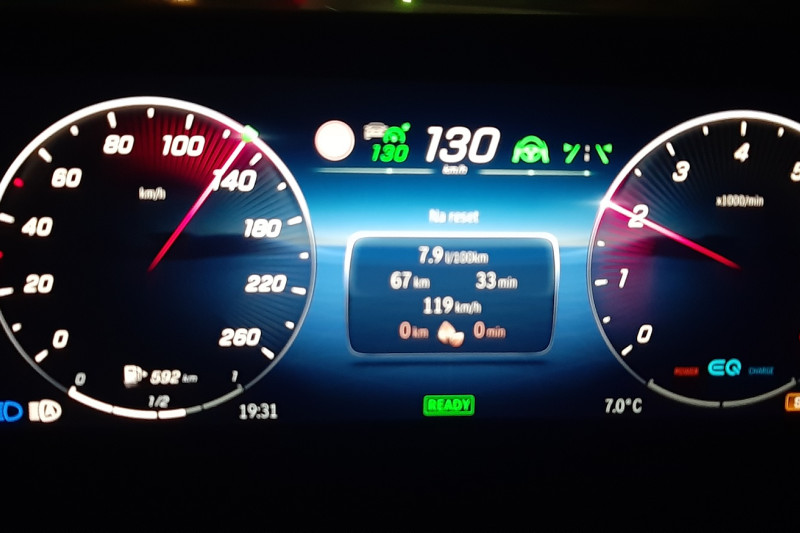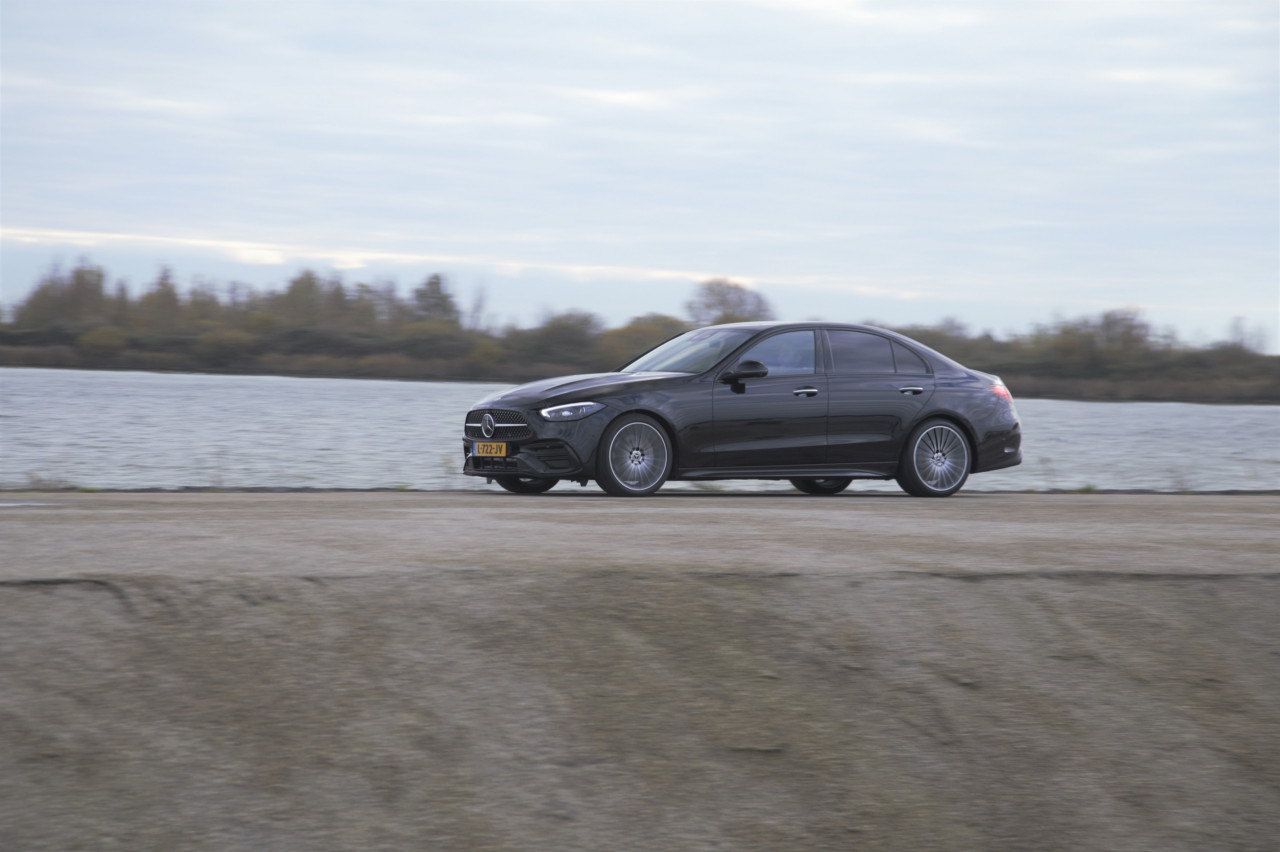Time is money. And gasoline has never been so expensive. Dilemma: how much (money) is it worth to you to floor the accelerator, if you only get home a few minutes early? Maybe this test will make you think. We went out with the new Mercedes C 300 to compare the consumption figures at 100 and 130 km/h. The result is sobering…

Electric cars undergo a range test as standard when they stay at the editorial office of Car Review. We want to know how much power they consume at 100 and 130 km/h, and how far they can get at these speeds on a full battery. Example: the Tesla Model 3 Longe Range is satisfied with 15.8 kWh/100 km at 100 km/h (range: 443 km), at 130 km/h the power consumption is 20.6 kWh/100 km (range: 340 km ), that’s how we calculated it for you. A difference of 30.37 percent. With a kWh price of 0.59 euros (source: Shell Recharge), you are 2.83 euros more expensive over a distance of 100 kilometers.

Consumption at 100 km/h
But what about cars with a combustion engine? What is the fuel consumption difference at 100 and 130 km/h? And, more importantly, how do you feel about that in your wallet? For a report in our magazine, we have the new Mercedes C 300 visiting. A very suitable candidate to look for differences in consumption. The car has a two-litre four-cylinder turbo engine, which produces 258 hp and is assisted by a mild hybrid system, good for an additional 20 hp.
On a quiet Tuesday evening (8.5 degrees above zero, wind force 2 from the northwest), we turn onto the slightly damp highway near Nijmegen. With the adaptive cruise control at 100, the seat heating at one light, the heater at 21 and the radio on, we head for Venlo. The automatic transmission remains adamant in eighth gear. After about 50 kilometers of the quiet A73 we turn around and drive the same route in the opposite direction back to Nijmegen. Result on the on-board computer: a fuel consumption of 5.8 liters of petrol per 100 kilometers. A decent value!


“It could just be that the difference with your car is even greater!”
Consumption at 130 km/h
It has been 7 pm, we can step on the accelerator more deeply without scruples. In other words: lock the cruise control at 130 km/h. We discover that the automatic transmission in the Comfort program now shifts to ninth gear – Hey Mercedes, we think that’s cheating! So we manually downshift again, and leave it that way until the turning point. The on-board computer is reset, the test has started.
After about fifty kilometers we turn around again in the direction of Nijmegen, our consumption trip is approaching its end. The on-board computer of the Mercedes C 300 now notes an average consumption of 7.9 liters. That is 2.1 liters more petrol over a distance of 100 kilometers than at 100 km/h – or 36.2 percent! That saves a drink on a drink, while the Mercedes C 300 has excellent aerodynamics and the petrol engine is assisted by a mild hybrid system. It could just be that the difference with your car is even greater!
The cost picture? At an average price of 2.12 euros for a liter of E5 petrol (daily price on December 1, source: unitedconsumers.com), you are 4.45 euros more expensive over a distance of 100 kilometers, if you invariably want to drive 130. We consider that a considerable additional cost, for such a short distance!
Moral of this story
Everything is expensive today. Perhaps your monthly fuel budget is still under the most pressure. What you can do right away to keep fuel costs under control is to stop giving in to you need for speed. Fine if at 7 p.m. the speed limits are shifted to 130 km/h. But if you go along with that, you will be felt in your wallet. Extremely hard.
